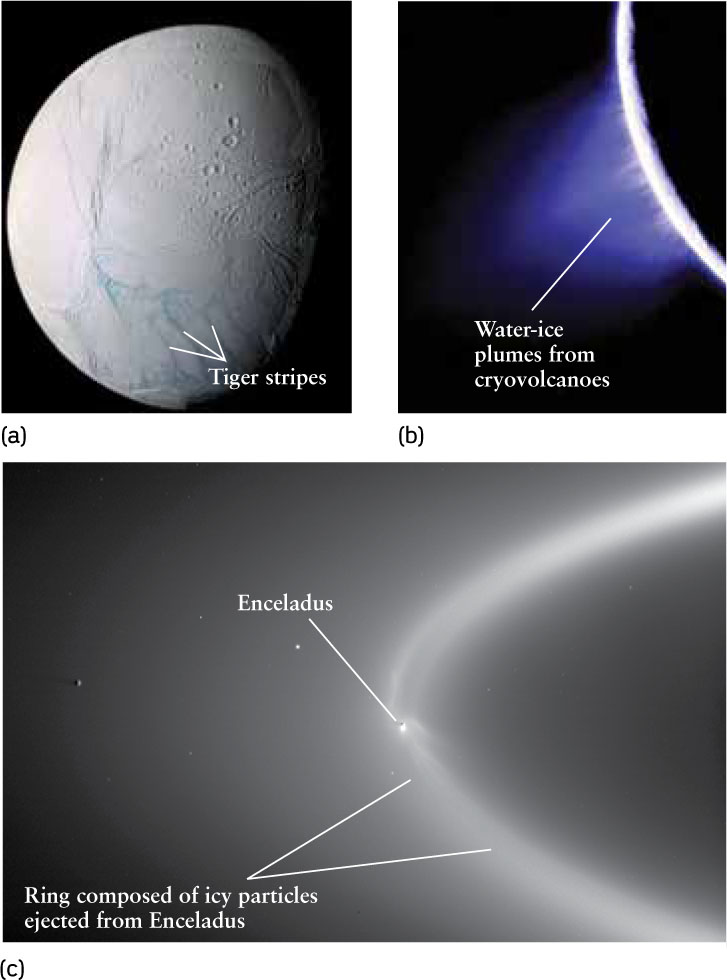
Figure 13-29: R I V U X G
Cryovolcanoes on Enceladus (a) This Cassini image reveals an icy Enceladus. The lack of significant cratering suggests that some geologic process resurfaced the moon within the past 100 million years. (b) Plumes of water vapor and ice are erupting from cryovolcanoes associated with the “tiger stripes” near the south pole of Enceladus. The faint plumes are best seen when they are backlit by the Sun, so Enceladus appears as a crescent. (c) A backlit view from Cassini shows how particles ejected from Enceladus become part of Saturn’s E ring, within which Enceladus orbits (see Figure 12-24).
Cryovolcanoes on Enceladus (a) This Cassini image reveals an icy Enceladus. The lack of significant cratering suggests that some geologic process resurfaced the moon within the past 100 million years. (b) Plumes of water vapor and ice are erupting from cryovolcanoes associated with the “tiger stripes” near the south pole of Enceladus. The faint plumes are best seen when they are backlit by the Sun, so Enceladus appears as a crescent. (c) A backlit view from Cassini shows how particles ejected from Enceladus become part of Saturn’s E ring, within which Enceladus orbits (see Figure 12-24).
(NASA/JPL/Space Science Institute)